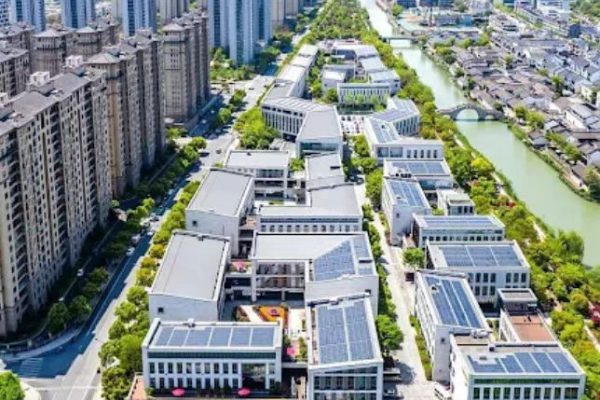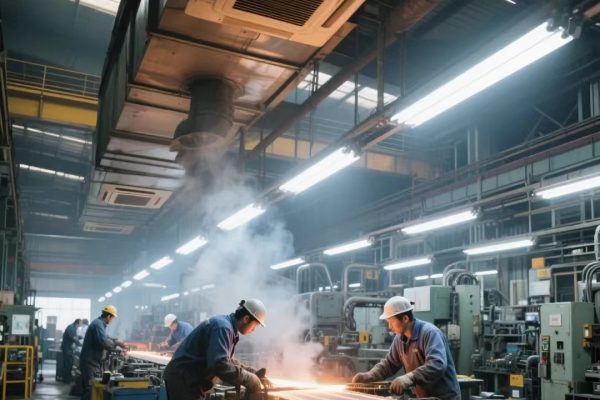Why Looks Matter More Than You Think in the Home Energy Sector
Not Just Function—Form Matters Too
In residential solar + storage, performance is king — but design is the silent dealbreaker.
Today’s homeowners care not only about efficiency and ROI, but also about:
- How the inverter or battery looks
- Whether it fits their interior or exterior aesthetic
- Whether it looks “clean” or “industrial”
If you’re selling into higher-end homes, urban apartments, or design-conscious markets (like Europe, Australia, Japan), the product’s visual appearance may impact:
💡 Whether the installer gets the job, or loses it to a more elegant competitor
This article breaks down why aesthetic design matters — and how exporters, OEMs, and installers can respond.
💬 What Homeowners Are Saying
“We loved the solar pitch… but I don’t want an ugly grey box next to my kitchen.”
“Can we hide the battery in a cabinet?”
“My neighbor’s system looks sleek — yours looks like an old telecom unit.”
Even if they don’t say it directly, clients judge your system visually:
- Is the display modern or outdated?
- Are the cables exposed?
- Is the branding clean or cheap-looking?
- Does it look like medical equipment, or a Tesla?
👁️🗨️ Where Aesthetics Matter Most
| Area | Why It Matters |
|---|---|
| Indoor installations | Living rooms, garages, hallways, closets – visibility is high |
| Apartments / Villas | Design-conscious buyers, often women decision-makers |
| Airbnb or hospitality installs | Systems may be shown to guests |
| Luxury homes | Clients expect both form and function |
| Europe / Australia / Japan | High sensitivity to visual clutter |
🧱 Common Design Mistakes That Hurt Sales
- Oversized logos or stickers
- Exposed cabling without trunking
- Beeping inverters that sound like alarms
- Industrial-style displays with outdated LCDs
- No color or finish options (always matte gray)
- Boxy battery shapes with rough edges
- Messy installation photos on marketing materials
⚠️ Even top-tier tech can be rejected due to “cheap” looks.
✅ What Aesthetically Strong Systems Get Right
1. Clean, Minimalist Design
- Smooth corners
- Flush-mounted LCD or touchscreen
- No visible fasteners
- Neutral color palette: white, black, gray
- No flashing LEDs unless necessary
Think: Apple, Nest, Tesla Powerwall
2. Wall-Friendly Form Factors
- Slim profiles that fit along walls
- Stackable batteries that don’t dominate small rooms
- Optional covers or magnetic panels to hide ports
3. Integrated Cable Management
- Hidden ports at the back or bottom
- Matching trunking for inverter-to-battery cables
- Cable inlets designed to face downward, not sideways
4. Silent or Near-Silent Operation
- Homeowners hate fan noise
- Residential-grade units should run below 25 dB under load
- Optional “Quiet Mode” for night-time operation
5. Smart Display or App Control
- Digital screen with icons, not just numbers
- Companion app that replaces the screen altogether
- Wall mount LCD remote with ambient readouts
🎨 Aesthetic Design Features Installers Love Too
Installers are also affected by looks — because:
- A tidy system earns referrals
- Fewer customer complaints = smoother jobs
- Neat gear = easier marketing photography
📸 Many installers now post completed jobs on Instagram or Facebook, which means your inverter is part of their brand image too.
🌍 Regional Differences in Design Expectations
| Region | Aesthetic Sensitivity |
|---|---|
| 🇯🇵 Japan | Very high (compact + quiet) |
| 🇪🇺 Europe | High (clean, minimalist) |
| 🇦🇺 Australia | Medium-high (garage-friendly, sleek) |
| 🇺🇸 USA | Mixed (function first, design second) |
| 🇮🇳 / 🇵🇭 / 🇳🇬 | Low to medium (value-oriented) |
If you’re an exporter or OEM — match the design to your market.
🛠 OEM Tips: How to Build a Better-Looking ESS
If you’re designing or rebranding ESS for export:
- Keep logo small and subtle
- Choose modern fonts — no Times New Roman or Arial
- Consider curved enclosures
- Use quality powder coating or matte finishes
- Offer at least two color options (e.g., white/black)
- Add optional cable cover kit
- Allow vertical and horizontal mounting
And most importantly:
Get install photos from every market to test visual appeal.
🧩 Should You Hide ESS in a Cabinet?
This is a growing trend — but only safe if:
- Ventilation is guaranteed
- Battery BMS doesn’t rely on ambient airflow
- There’s easy access for maintenance
- Fire regulations allow enclosure
In Europe, enclosed installs must still pass IEC/CE clearance and airflow rules.
🧾 Final Checklist: Aesthetic Design for Residential PV + Storage
✅ Smooth, rounded edges
✅ Minimal branding
✅ Low noise levels
✅ Hidden cabling
✅ Modern UI (touchscreen or app)
✅ Install flexibility (wall/floor, indoor/outdoor)
✅ Sleek visuals in all marketing photos
✅ Regional model variants (colors, UI language, mounts)
Design Sells More Than You Think
In energy storage, your product must perform well, but it also needs to look good doing it — especially in the home.
A $10 inverter enclosure upgrade might close a $10,000 system deal.
So treat aesthetic design as a key feature, not an afterthought. Whether you’re an installer, OEM, or exporter — cleaner looks mean smoother sales, fewer complaints, and better long-term branding.









